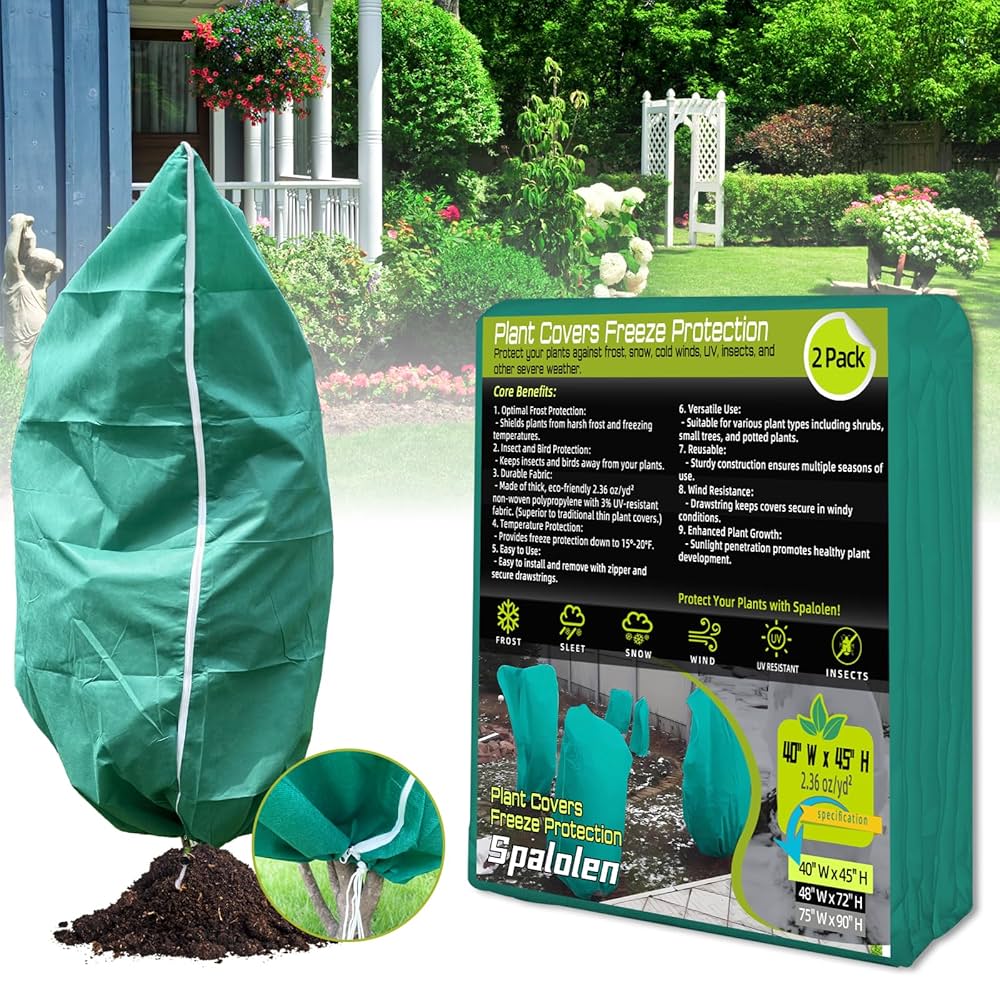Winter can be very hard for plants. Cold weather, frost, and snow can hurt them. Many gardeners use a snow blanket for plants to keep their garden safe. But what is a snow blanket? How does it help plants? Let’s learn more!
What Is a Snow Blanket for Plants?
A snow blanket is a special cover for plants. It is often made from soft, thick material. This cover goes over plants to protect them from cold air and frost. It looks like a blanket made just for your garden.
Snow blankets can be made of different materials. Some are made from fabric that lets air and water pass. Others are made from plastic or foam. The best snow blankets keep plants warm but still let them breathe.
Why Do Plants Need Protection in Winter?
Cold weather can damage plants in many ways:
- Frost Damage: Frost can freeze water inside plant cells. This can break the cells and hurt the plant.
- Dry Air: Winter air is often dry. This can make plants lose water and dry out.
- Snow Weight: Heavy snow can break branches or bend plants.
- Freezing Soil: Cold soil stops roots from working well. This can hurt plant growth.
Using a snow blanket helps stop these problems. It keeps plants warm and safe.
How Does a Snow Blanket Work?
A snow blanket works by creating a warm layer around plants. It holds heat from the ground and stops cold air from touching the plants. This helps keep plants above freezing temperature.
Good snow blankets also let water and air pass through. This stops plants from getting too wet or suffocating.
Think of it like a warm coat for your plants. It keeps them cozy during cold nights.
Types of Snow Blankets
| Type | Material | Pros | Cons |
|---|---|---|---|
| Fabric Blankets | Non-woven polypropylene or fleece | Breathable, reusable, lets water in | Can tear easily, may need support |
| Plastic Covers | Clear or colored plastic | Good for frost protection, cheap | Does not let air in, can cause overheating |
| Foam Mats | Foam sheets or pads | Good insulation, durable | Can trap moisture, heavy |

Credit: www.amazon.ca
When Should You Use a Snow Blanket?
Use a snow blanket when cold weather comes. Watch the weather forecast for frost warnings. Cover plants before the frost starts. This helps plants stay safe.
Remove the blanket when the weather warms up. If you leave it too long, plants may get too hot or wet.
Which Plants Need Snow Blankets?
Not all plants need snow blankets. Here are some that do:
- Tender perennials: These plants do not like frost.
- Young trees and shrubs: Their bark and roots are sensitive to cold.
- Vegetables: Some vegetables like tomatoes and peppers need extra care.
- Flowers: Some flowers die quickly in cold weather.
Hardy plants usually do not need blankets. But in very cold areas, even hardy plants can benefit.

Credit: www.amazon.ca
How to Use a Snow Blanket for Plants
Follow these simple steps:
- Check the weather for frost warnings.
- Cut the blanket to fit the plant size.
- Cover the whole plant, including branches and leaves.
- Secure the blanket with garden pins or stones to stop wind from blowing it away.
- Leave some space so air can move under the blanket.
- Remove the blanket on sunny, warm days.
Benefits of Using Snow Blankets
- Protects plants from frost and cold.
- Keeps soil warmer, helping roots survive.
- Reduces damage from snow and ice.
- Helps plants stay healthy until spring.
- Easy to use and remove.
Tips to Get the Best Results
- Use a blanket made for plants, not regular fabric.
- Don’t cover plants too tightly; they need air.
- Check plants often to avoid mold or rot.
- Remove snow from the blanket gently to avoid breaking branches.
- Use blankets early before frost begins.
Common Mistakes to Avoid
- Leaving plastic covers on too long – plants may overheat.
- Using blankets that do not let water in – can drown plants.
- Not securing the blanket well – wind can blow it away.
- Covering plants only after frost – damage may already happen.
How to Store Snow Blankets After Winter
After winter, clean your snow blanket. Shake off dirt and leaves. Let it dry completely. Store it in a dry place away from sunlight. This keeps the blanket ready for next winter.
Frequently Asked Questions
What Is A Snow Blanket For Plants?
A snow blanket is a protective cover. It shields plants from cold and frost.
How Does A Snow Blanket Work?
It traps heat and moisture. This keeps plants warm during winter.
Why Use A Snow Blanket For Plants?
It prevents frost damage. Also, it helps maintain soil temperature.
When Should You Apply A Snow Blanket?
Apply before frost hits. Early winter is ideal for best results.
Conclusion
A snow blanket for plants is a simple way to protect your garden. It keeps plants safe from cold, frost, and snow. Using the right blanket helps plants grow strong and healthy. Remember to watch the weather and cover plants early. Take good care of your snow blanket so you can use it year after year.
With a little care, your plants can survive winter well. A snow blanket is one tool to help. Your garden will thank you when spring comes.
5 min read

